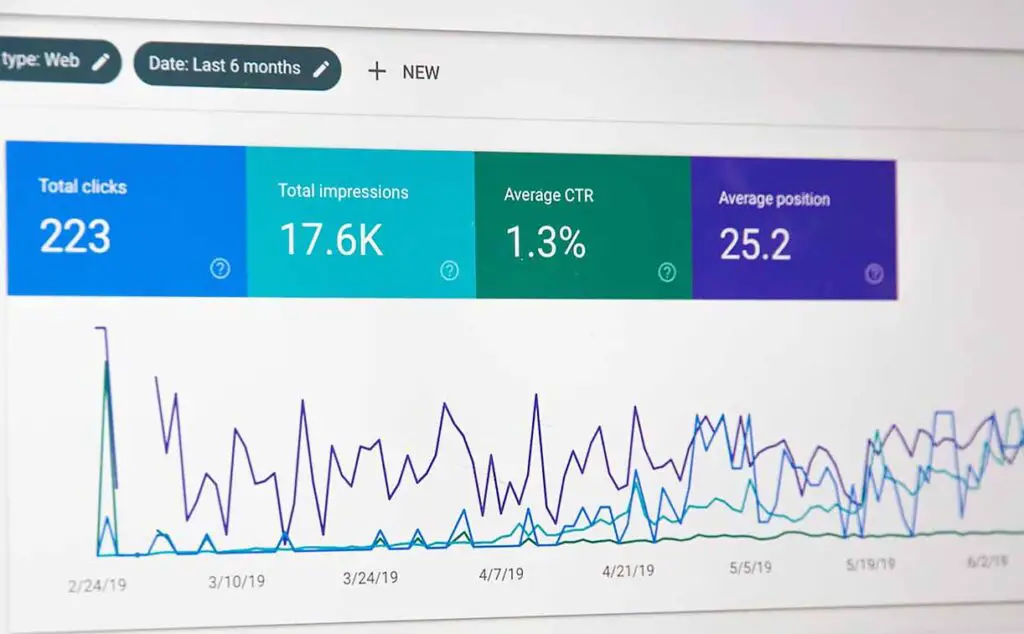Discover the ultimate guide to writing high-converting affiliate blog posts, covering the basics of affiliate marketing, choosing the right programs, crafting engaging content, and more. Boost your blog’s success today with our ultimate affiliate article guide!
- Understand the Basics of Affiliate Marketing
- Choose the Right Affiliate Programs and Products for Your Blog / Website
- Follow a Good Structure of an Affiliate Article / Blog Post
- Create High-Quality, Engaging Content – The Most Important Part
- Implement Effective Call-to-Actions (CTAs) to Boost Conversions
- Utilize The Best SEO Practices to Improve Your Blog’s Visibility
- Track Your Affiliate Blog’s Performance and Adjust Your Strategy
- The Summary – Affiliate Article Writing Tips
Check out also: Is Buying Blog Posts On Fiverr Still Worth It? (Let’s See!)
1. Understand the Basics of Affiliate Marketing
If you already know the basics of how affiliate marketing works, feel free to skip this first paragraph!
Before diving straight into writing our affiliate blog posts, it’s essential to understand the basics of affiliate marketing. Affiliate marketing is a performance-based marketing strategy where you, as a blogger or any other kind of an online influencer, promote products or services from other companies and earn a commission for each sale or lead generated through your unique referral link. The process involves three main parties:
- Affiliate (You) – The person who promotes the products or services and earns a commission.
- Merchant – The company or individual that offers the products or services. Many different companies offer affiliate programs that you can join even having just a small online audience.
- Customer – The person who purchases the products or services through your referral link.
To succeed in affiliate marketing, you need to establish trust with your online audience, choose the right products to promote, and create high-quality, engaging content that in the end will drive conversions – so for instance product sales on which you’ll earn money in the end.
Remember, the key to success is providing value to your readers and helping them make informed decisions rather than simply blasting each of your articles and posts with affiliate links and waiting for sales to happen magically.
If you don’t provide value within your content, your visitors will either leave your site quickly without even considering the services you’re advertising, or click your links by accident and not follow through with a purchase. In both of these cases you’ll simply waste time and not earn any money whatsoever.
2. Choose the Right Affiliate Programs and Products for Your Blog / Website

When it comes to affiliate marketing, selecting the right affiliate programs and products is crucial for your blog’s success. Here are some factors to consider:
- Relevance: Make sure the products or services you promote are relevant to your blog’s niche and audience. This increases the chances of conversions, as your readers are more likely to be interested in those offerings and most search engines tend to rank sites with consistent topical authority higher.
- Quality: Focus on promoting high-quality products or services that you believe in and would personally use. This helps build trust with your audience and ensures long-term success. It also makes creating promotional materials for your affiliate campaigns much easier.
- Commission Rates: Look for affiliate programs that offer competitive commission rates to maximize your earnings. However, don’t let this be the sole deciding factor, as higher commission rates don’t always guarantee better results in the very end. If you pick up an affiliate partnership with lower commission rates (such as the Amazon Affiliate Partnership), be sure that you promote higher value products to make up for the small percentage that you will get out of each generated sale in the end.
- Cookie Duration: Consider the cookie duration offered by the affiliate program. This is the time frame in which you can earn a commission after a user clicks on your affiliate link. Longer cookie durations are generally more favorable, and the info about it is always readily available in the chosen affiliate program terms of service document.
- Support and Resources: Opt for affiliate programs that provide strong support and resources, such as promotional materials, training, and responsive customer service. This can make a significant difference in your success as an affiliate marketer. Most offers on sites like ClickBank and Digistore24 do offer quite a large amount of promo content for you to use in your articles and posts promoting the product. This can really save you a lot of time!
To find the best affiliate programs and products for your blog, start by researching popular options in your niche. Join affiliate marketing forums, read reviews, and reach out to fellow bloggers for recommendations. Remember, the key is to find a balance between profitability and value for your audience.
If you’d ask us, we’d say that in the very beginning you may be interested in either the Amazon Affiliate Program, Ebay Affiliate Program, or when it comes to higher converting offers – sites like ClickBank or Digistore24. Do a quick web search for these if you want to know more!
If your site is a micro-niche site, or a site centered solely around one type of products and/or services, the best way to go about finding an affiliate program that’s best for you would be to simply Google it.
Start with a query that’s built like this: “your niche” + affiliate program(s). After a few minutes you should find quite a few worthwhile programs that will fit your site perfectly.
Watch out for money sites that promote large amounts of affiliate offers with their own affiliate links to them and a little added value. While these sites can sometimes be helpful, they can also be a large waste of time to go through if they are created solely for the purpose of promoting their own affiliate links and connections.
3. Follow a Good Structure of an Affiliate Article / Blog Post
A well-structured affiliate article is crucial for keeping your readers engaged and guiding them towards conversion – so an actual product/service sale which will earn you money. Here’s a breakdown of the key elements to include in your promotional blog post:
- Introduction: Start with a captivating hook that grabs the reader’s attention and briefly introduces the topic. Make sure to mention the benefits of reading your article and how it will help them. This, alongside with the article title is one of the most important elements of your content which most viewers will see first. Retain their attention!
- The Main Problem – base your articles around the problems the products or services you’re advertising are trying to solve. Do your keyword research and find questions that are low-competition and revolve around the product or service you’re advertising. A good example here would be an article titled “How To Grow Vegetables At Home”, which would advertise a vegetable garden course of some sort. In the beginning of the article, present a concrete answer to the question to then do a smooth transition to your advertised product.
- Product/Service Overview: Provide a brief overview of the affiliate products or services you’re promoting. Highlight their main features, benefits, and any unique selling points. Keep it real and don’t over advertise – focus more on the issue that the article is trying to solve, and then follow through with the actual product as an advertised solution.
- In-Depth Review: Delve deeper into the product’s features and benefits by discussing them in detail. Share your personal experience and opinions, and include any relevant research or expert opinions to support your claims. Again, be sure to focus on explaining why the reader in fact does need the product you’re trying to sell, rather than on the sole qualities of the product itself.
- Comparison: If applicable, compare the product with similar alternatives in the market. This helps readers understand how it stacks up against the competition and can guide them towards the best choice for their needs.
- Testimonials and Social Proof: Share testimonials, reviews, or case studies from real users to build trust and credibility. This can be a powerful motivator for readers to try the product themselves.
- Call-to-Action (CTA): End your article with a clear and persuasive CTA that encourages readers to take the desired action, such as clicking on your affiliate link, signing up for a trial, or making a purchase. You can place different CTAs in more than one place in your article.
- Conclusion: Sum up the main points of your article and answer the main topic question once again in a shorter manner. Reiterate your CTA and one last time encourage readers to take action.
More on the article content optimization tips in a short while!
4. Create High-Quality, Engaging Content – The Most Important Part

When it comes to writing affiliate blog posts, content really is king. Your primary goal should be to provide value to your readers who really don’t want to waste their time on reading another poorly written advertisement. Here are some tips on how to create high-quality, engaging content:
- Research: Understand the product or service you’re promoting. Know its features, benefits, and potential drawbacks. This will help you write a comprehensive and honest review.
- Write for your specific audience: Tailor your content to your target audience. Use language and tone that resonate with them. Avoid jargon and overly technical terms if you suspect that would drive some people off.
- Be honest and transparent: Share either your genuine experiences or honest opinions about the product or service you’re promoting. Don’t be afraid to mention any cons or issues you’ve encountered. This builds trust with your readers and makes the entirety of your content more believable and down-to-earth.
- Use visuals: As always, be sure to incorporate images, videos, and infographics to break up large blocks of text and make your content more engaging. One single block of text isn’t a thing that’s going to catch anyone’s eye nowadays!
- Tell a story: Share your personal experiences and anecdotes related to the product or service. This makes your content more relatable and memorable.
- Edit and proofread: Ensure your content is free of grammatical errors, typos, and inconsistencies. This reflects professionalism and credibility and is really worth a few extra minutes of work.
Remember, the key to creating high-quality, engaging content is to put your readers first. Provide them with valuable information, and they’ll be more likely to trust your recommendations and go through with your propositions.
See also: Is Stock Photography Still Worth It Today? – An Honest Take
5. Implement Effective Call-to-Actions (CTAs) to Boost Conversions
An essential aspect of writing affiliate blog posts that convert is incorporating persuasive Call-to-Actions (CTAs). These are the elements that prompt your readers to take the desired action, such as clicking on your affiliate link or signing up for a newsletter. They can take form of simple in-content links like this, or large attention driving CTA buttons. To create effective CTAs, consider the following tips:
- Be clear and concise: Your CTA should be straightforward and to the point. Use strong, action-oriented words like “Buy Now,” “Sign Up,” or “Learn More.”
- Create a sense of urgency: Encourage readers to act quickly by adding time-sensitive phrases like “Limited Time Offer” or “Catch The Deal!”
- Use contrasting colors and design: Make your CTAs stand out visually by using contrasting colors and design elements that draw attention.
- Place CTAs strategically: Position your CTAs throughout your content, but don’t overdo it. Ideally, include them after providing valuable information on the product, or at the end of a section.
- Test and optimize: Regularly test different CTA variations (colors, text, placement) to determine which ones perform best and optimize accordingly.
The main point of CTAs is to catch the buyer’s attention and make them actually check out the offer you’re trying to promote in your content.
Remember, a well-crafted CTA can significantly impact your conversion rates, so take the time to create compelling and persuasive call-to-actions for your affiliate blog posts.
6. Utilize The Best SEO Practices to Improve Your Blog’s Visibility

To ensure your affiliate blog posts reach the right audience and rank higher on search engines without utilizing paid traffic, it’s crucial to implement the best SEO practices. Here are some key aspects to consider:
- Keyword Research: Identify the most relevant and high-traffic keywords for your niche. Use tools like Google Keyword Planner, Ahrefs, or SEMrush to find the best keywords for your blog post.
- Optimizing Content: Incorporate the target keywords naturally throughout your content, including the title, headings, meta description, and body text. Avoid keyword stuffing (placing repeated keywords in close proximity), as it can very easily harm your search engine rankings.
- Readability: Ensure your content is easy to read and understand. Break up long paragraphs, use bullet points or numbered lists, and include relevant images or videos.
- Mobile-Friendly Design: With the majority of users accessing content on mobile devices, it’s essential to have a responsive design that adapts to different screen sizes. Make sure that your site is easy to read and navigate on smartphones and tablets.
- Internal and External Linking: Include relevant internal links to other blog posts or pages in your articles/blog posts, as well as external links to authoritative sources that you trust. This helps search engines understand your content better and in the end can help you improve your final site rankings.
- Optimizing Images: Compress and optimize images for faster loading times, and include descriptive alt tags and captions.
- Page Speed: Improve your website’s loading speed by using a reliable hosting provider, optimizing images, and minimizing the use of heavy plugins. Test your website’s speed using tools like Google PageSpeed Insights or GTmetrix.
- Tracking and Analyzing: Regularly monitor your blog’s performance using tools like Google Analytics and Google Search Console. Analyze the data to identify areas for improvement and adjust your SEO strategy accordingly.
By implementing these best SEO practices, you can significantly improve your blog’s visibility and drive more organic traffic to your affiliate blog posts. Now, more about the much needed conversion tracking.
7. Track Your Affiliate Blog’s Performance and Adjust Your Strategy
To ensure the success of your affiliate blog, it’s crucial to track its performance in the right way, and make necessary adjustments to your strategy as you go. Here are some key aspects to monitor:
- Traffic: Use tools like Google Analytics to track the number of visitors, their behavior, and the sources of traffic. This will help you identify which channels are driving the most traffic to your blog.
- Conversion Rates: Analyze the conversion rates of your affiliate links to determine which products or services are generating the most revenue. This can help you decide which affiliate programs to focus on.
- Engagement: Keep an eye on your blog’s engagement metrics, such as time spent on the page, bounce rate, and social shares. High engagement and time-on-page indicate that your content is resonating with your audience and is driving “real” and quality traffic to your site.
- Keyword Rankings: Track the performance of your target keywords using tools like SEMrush or Ahrefs. This will help you identify opportunities to improve your SEO strategy and increase your blog’s visibility.
- A/B Testing: Experiment with different headlines, images, CTAs, and content formats to see what resonates best with your audience. Compare the conversion rates using two different versions of the article layout over the same amount of time. Use the insights gained from A/B testing to optimize your blog posts for higher conversions.
By regularly monitoring your blog’s performance and making data-driven adjustments, you can ensure the continued success of your affiliate marketing efforts. Remember, it’s essential to be flexible and willing to adapt your strategy as needed to actually be successful in affiliate marketing.
8. The Summary – Affiliate Article Writing Tips

In conclusion, writing good affiliate blog posts that convert is a multi-step process that doesn’t have to be hard if you know how to start. Here is a quick recap of what we’ve learned.
- Understand the very basics of affiliate marketing to ensure you have a solid foundation of the general affiliate marketing process to begin with.
- Choose the right affiliate programs and products that align with your blog’s niche and audience.
- Create a well-structured article that is easy to read and navigate.
- Focus on high-quality, engaging content that provides value to your readers.
- Implement effective CTAs to encourage readers to take action and boost conversions.
- Utilize best SEO practices to improve your blog’s visibility and reach a wider audience.
- Track your blog’s performance and adjust your strategy as needed to optimize results.
- Stay informed and continue learning to stay ahead in the competitive world of affiliate marketing.
By following these steps and being persistent, you can create successful affiliate blog posts that convert and generate revenue for your blog. We hope we were able to help you here!
You might also like: Can You Get Clicks & Impressions During Google Ads Bid Strategy Learning Phase?


